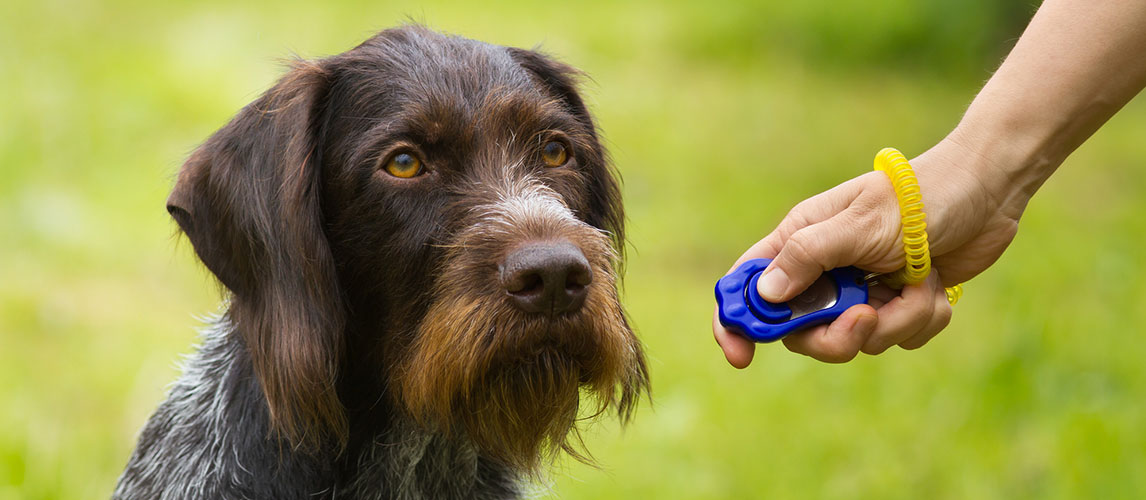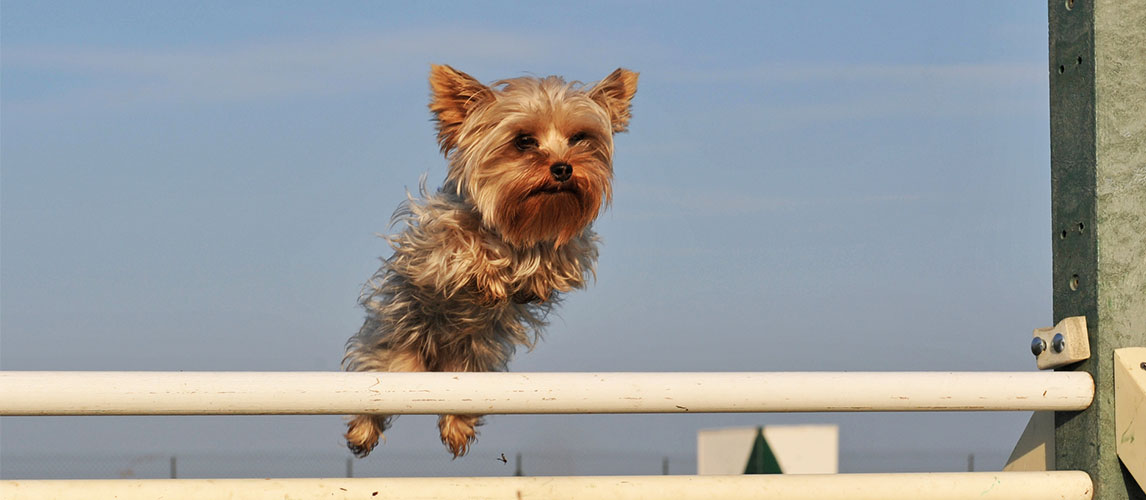When it comes to positive reinforcement, nothing can be more effective than high-quality doggie treats. As a matter of fact, even seasoned dog trainers and celebrity canine behaviorists use treats in instilling the right kind of behavior expected from any breed of dog. If you’re a new pet parent or you haven’t mastered the art of using treats to train your pet hound, this article is for you.
Some Principles You Need to Understand When Using Treats to Train Dogs
Using treats for dog training is not as simple as giving the tasty delicacy randomly or wantonly. To help you better understand how treats should be used in the training of dogs, try to understand the following principles.
- Any behavior that is rewarded increases the likelihood that the behavior will be repeated
Ivan Pavlov shed light into a type of learning that is considered as one of the backbones of dog training. Known as Classical conditioning or Pavlovian conditioning, it is believed that when dogs or any organism for that matter is presented with a biologically-potent, compelling stimulus, a specific response can be elicited. This was further strengthened with the theory of Edward L. Thorndike on Operant conditioning whereby organisms are naturally averse to punishments while delighted with rewards or reinforcements.
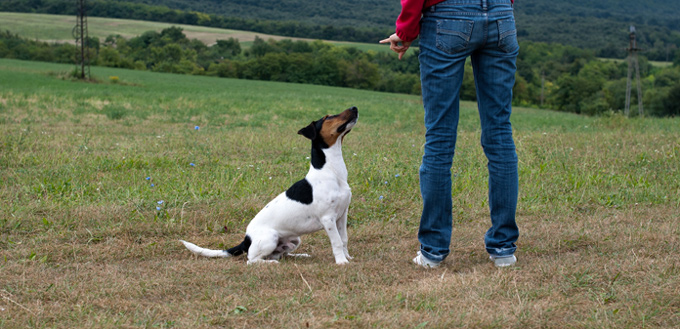
These two theories provide the backbone to a key component in using treats in dog training as part of positive reinforcement. According to Pavlov, food is a very powerful motivator. For Thorndike, using positive reinforcements such as anything that is highly pleasurable (like food) can elicit the repetition of the desired behavior. Dogs do whatever works.
As such, if you give your pet while it is sitting, it knows that sitting will bring more treats. So, your dog will be sitting all day. The same is true with dogs that are always jumping. If they jump and you give them attention, they will learn to repeat the behavior because they now know that jumping will give the attention.
- All canines learn by association
In the latter part of the 17th century, John Locke described the process of learning as a complex method of forming associations. This refers to the ability of people to connect events as a matter of actions and outcomes. While Locke’s theory of learning is focused mainly on how people learn, the fundamental tenet of his theory can now be found in many dog training techniques, both rewards-based and discipline-based. The point is that dogs that are being trained will learn to associate an outcome with an action.
Unfortunately, dogs are not gifted with long-term associative learning. They cannot readily make the connection between an action that was performed several minutes ago and the reward that followed several minutes after. That is why one of the most important principles in using treats in dog training is to give the treat immediately after the desired behavior.
For instance, if you’re training your dog to obey the command ‘sit’, then you should give the treat as soon as your dog is able to ‘sit’. If you wait a couple of minutes before giving your dog the treat, your pet will be confused because there will be nothing to associate the reward (treat) with. If your dog was barking when you gave the treat, it learns to associate the treat with the barking. Naturally, your dog will keep on barking since it has now ‘learned’ that barking is associated with the treat.
- Positive reinforcement is all about what your dog wants
One of the biggest mistakes that most pet parents make when it comes to using positive reinforcement in dog training is that they provide the things that they ‘think’ their dogs will like. Unfortunately, it doesn’t always work that way. You may buy the yummiest and the most expensive treats for the sole reason that you ‘think’ your dog will love it, but if your dog simply thinks it is not rewarding enough then you end up with a very expensive piece of rubbish.
The key here is to use a reward that your dog really wants. You have to understand that not all dogs will respond with the same enthusiasm when presented with a high-quality treat. For some dogs, being able to play with their favorite toys is more important. Some would prefer playing ball or Frisbee with you. Others are more content with a special hug that only you can give.
Study your dog very well. Learn what it really likes, what can really make it happy.
Related Post: Best Dog Frisbee
- The treat or ‘reward’ should be something special
If your dog is like many others that respond positively with treats, you need to make sure that the treat you provide is something very rewarding. A treat is typically defined as something that doesn’t come very often. If you decide to use its dog kibble as treat, your dog will not really look at it as something ‘special’ since it already gets this every time you give it its food bowl. Now try giving your pet a slice of banana topped with creamy but unsalted dog safe peanut butter and you can almost see immediately the glow in your dog’s eyes.
Related Post: Dog Bowls
- Variations in the giving of treats can keep your dog interested
Over time your dog will already know that doing a particular behavior will bring it some yummy treat. Unfortunately, your dog will lose interest, too if you keep following the same pattern. For your dog training to work you need to modify the way you give the treat. You can give more treats at certain points in the training process or you can lavish your pet with more praises or hugs, whichever your dog likes. Experts call this hitting the jackpot and it is something that is way more special than the usual reward that your pet receives.
Keep these principles in mind whenever you’re using treats to train your dog. There may be some modifications along the way, but you can always bet that these will help you get the most out of every training session.
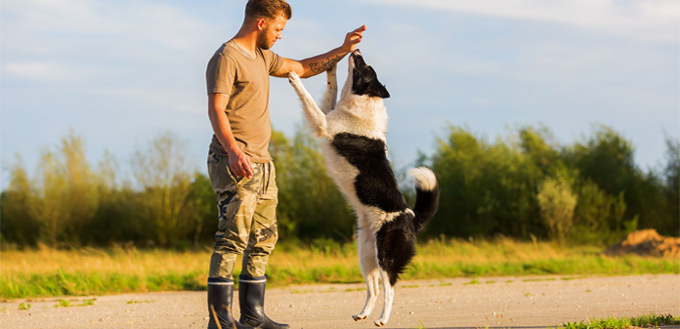
How to Train Your Dog Using Treats
Now that we have laid the foundation for using treats to train your dog, it’s time to put these principles into practice. Here is how you can train your dog using treats.
- Always start with puppies
Effective canine training is best started early in the young pup’s life. While adult dogs can still be trained, it will require greater patience, perseverance, commitment, and dedication. The reason why treats are best used in puppies is because this life stage of a dog is still characterized by high dependence on physiologic needs – food, water, and air. Puppies cannot truly appreciate just yet the value of other forms of positive reinforcement. For them as long as their tummies are filled, everything is good. This is where high-quality treats come in.
Related Post: Best Chew Toys for Puppies
- Use smaller yet high-quality treats
When training your dog, be it an adult or a puppy, it is important to choose the right kind of treat. As we have already mentioned in the preceding section, a doggie treat should be something special and not just any other item that your dog can easily obtain. High-quality treats are often packed with a lot of nutrients. If you give them larger sizes, you will have to make the necessary adjustments in their nutrient intake. What you can do is to provide smaller bits of high-quality treats so you can feed more in terms of the number of treats. One of the principles we mentioned is to give jackpots to your dog. This can be achieved by being generous at times. The more generous you are with your rewards while training your dog, the more positive the behavior that you will expect from your pet.
- Start with the lure-and-reward technique
Using treats for training dogs almost always utilizes the lure-and-reward technique. This is quite easy to perform. A classic example is when teaching your pet to lie down. What you do is to let your dog sniff the treat in your hands while your pet is sitting. Just as give the command ‘down’ you’ll bring your hand down to the floor so that your dog will follow the movement of your hand. Eventually your dog lies down and as soon as it accomplishes that, you give the verbal event cue (you can say “Yes!” if you want to) and give your dog its treat. Alternatively, you can use a dog training clicker to ‘mark’ the event.
The treat is the bait and the movement of your hand towards the floor ‘lured’ your dog into the lying down position. Of course, when it received its treat you rewarded your dog. This is the fundamental structure of the lure-and-reward technique. There are two ‘markers’ to be used here: one for the ‘lure’ and another for the ‘reward’.
- Master the fading-the-lure technique to avoid bribing
The problem with the lure-and-reward technique is that it looks like you’re bribing your pet to follow the movement of your hand. Over time your dog learns to follow the ‘food’ or the treat and not necessarily the marker for the behavior. For instance, if you use the same technique over and over your dog will associate the treat as part of the verbal cue. Remarkably, this behavior rarely occurs in clicker training; only in the use of verbal cues does the issue of bribing appear very often.
There is one technique you can use to help prevent your dog from associating the treat with the cue. This is called the fading-the-lure technique. In this method you will still use the lure-and-reward technique, but only use it several times. On your next luring technique, present your hand but without any treat, issue the verbal command ‘down’, and move your hand towards the floor. Upon reaching the floor, say ‘Yes’ or whatever verbal marker you used. It is very important to use the same verbal markers over and over. Right after the ‘Yes’ cue, give your dog its treat that you hid in your other hand.
The technique here is for your dog to learn to associate the verbal command with the issuance of the treat. Hiding your treat will help prevent your dog from connecting the treat with the cue.
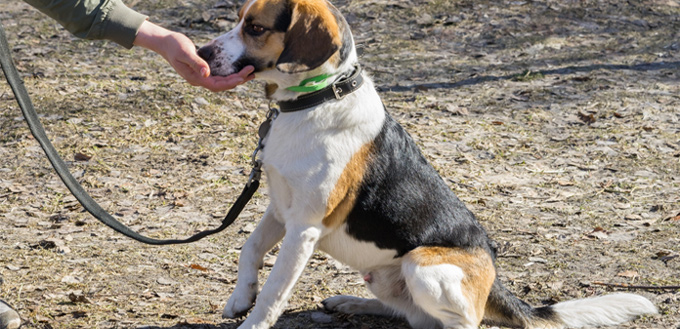
Your dog may not get it the first time, so it’s perfectly okay. It will soon learn to follow your ‘empty’ hand. If your pet starts to move downwards hesitantly, immediately issue the ‘Yes’ marker and give your dog its treat. Make sure to deliver the treat at a lower level so your dog will continue moving downwards. This will help your pet to realize that when you say ‘down’ it means that it needs to go down to the floor. It takes practice, but your dog will eventually get it.
- Always deliver or give the treats to your dog where you want your pet to be
If you are training your dog to walk with you and sit by your side when given the command, make sure to deliver the treat on the same location where you want your canine friend to be. An important lesson here is to issue or to give the food treat to your dog only when it is in the correct position or, if your pet is still in the initial stages of training, on its way towards that position. This teaches your dog to be always in the exact same position when the treat is delivered.
- Resist the temptation of over-treating
Dog treats should not comprise more than 10 percent of the daily food intake of your pet. When used more frequently than necessary treats can also lose their appeal to your dog.
- Gradually phase out the use of treats
By the time your pet is already responding to your commands correctly about 90 percent of the time, then you know that you can begin phasing out the use of treats in its training. Whatever you do, don’t abruptly discontinue the treating. Therefore, you can reduce the number of treats or perhaps even the size of the treats. You can also add more of the ‘life rewards’ such as praises, hugs, kisses, petting, and other non-food rewards.
- Always include other forms of positive reinforcement in the use of treats
Make it a point to always include ‘life rewards’ in your training. You can give treats while at the same time giving praises. This can come in handy during the phasing out of the treat. As you reduce the treats, you’ll be increasing more of the ‘life rewards’.
Advantages of Using Treats in Training Dogs
When it comes to positive reinforcement there are a lot of things that you can give to your dog as reward for desirable behavior. However, treats definitely have their distinct advantages over other types of positive reinforcements. These can include the following:
- Food is a great motivator
As we have already explained above, food is a very powerful motivator. It is something that is very basic. All organisms require food such that they are more than willing to work for it.
- You will be feeding your pet anyway
The good thing about using treats for training purposes is that you are also addressing your dog’s nutritional requirements. Just make sure that you have the right doggie treats though.
- It impresses something good in the dog’s mind
If you’re the one providing treats to your dog, then your pet will perceive you as important and relevant. In your dog’s mind, you are actually making a very good impression since you are being equated to the source of a very rewarding experience for your pet.
What Treats Should I Give My Dog?
Treats are available as commercially-prepared products or as homemade ones. Technically, the choice between the two is more a matter of preference. Store-bought treats are very easy to use as there are no messy preparations needed. Each treat is also formulated with the exact nutrients that your dog will need as part of its treating. They also come in the right sizes. The only issue is that, if you’re not careful about the product that you’re buying, you might end up with a low-quality dog treat.
Check out our review of the best dog treats for some great ideas on popular brands at the moment.
On the other hand, giving homemade treats can be quite tedious as you have to learn which foods are completely safe to give to dogs. Also, you will need to have an idea of the nutrient content of each preparation as well as the correct size of the treats. The good news is that dogs absolutely love human foods. Your best bet will be cooked meats from chicken, beef, or even pork. If you have liver or plain cheddar cheese, you can give these, too. Some fruits are always good choices. Caution should be exercised in giving homemade treats that have plenty of salt, sugar, spices, herbs, and trans-fats.
The value of positive reinforcement in dog training is simply immeasurable. While there are still those who adhere to the conventional, albeit outdated method of using aversion for training dogs, more and more pet parents are finding positive reinforcement techniques to be especially useful both in training their pets and in strengthening the pet parent-dog relationship. Learning how to properly use treats in training your dog can go a long way to ensuring the ideal behavior in your pet.
You may also like our articles on the Best Pig Ears For Dogs and Best Dog Jerky Treats.
Sources:
- Jolanta Benal, CPDT-KA, How to Train a Dog with Food Rewards, Quick and Dirty Tips
- Amy Bender, Using Treats for Dog Training, The Spruce Pets





